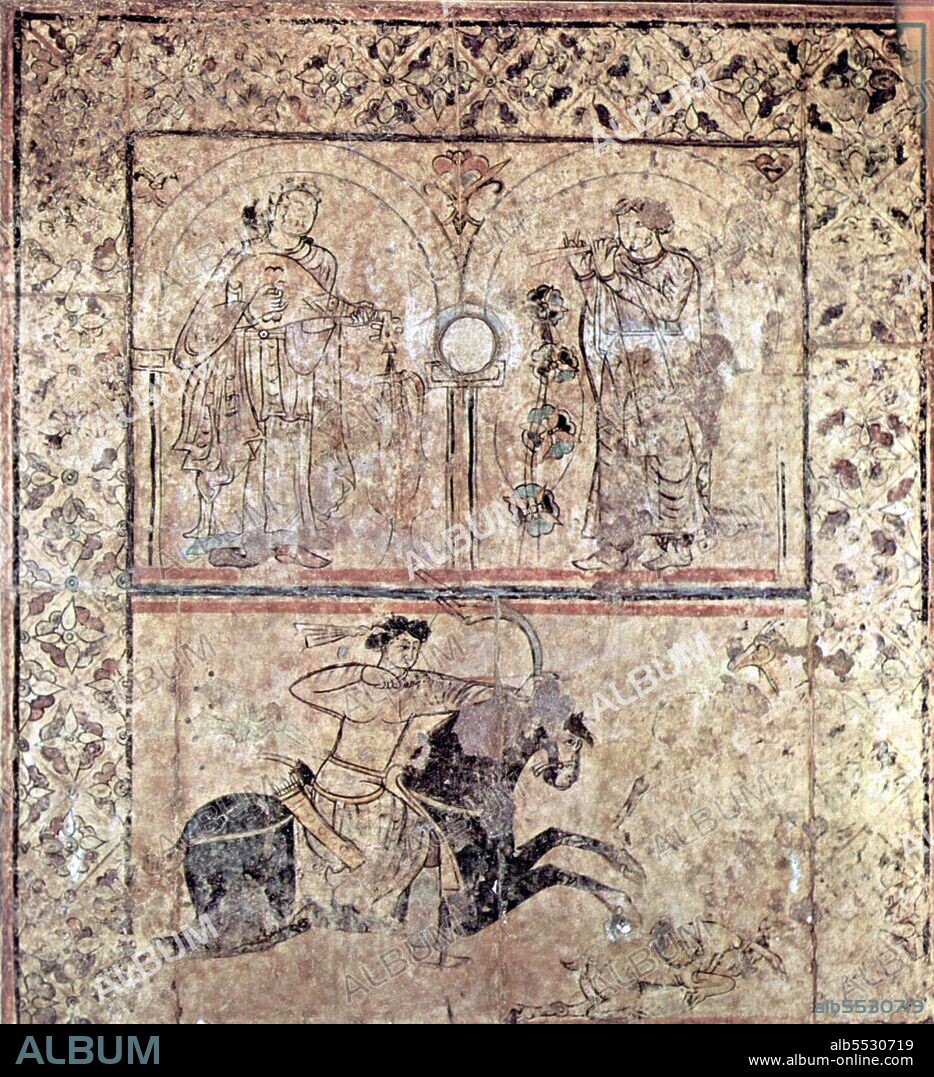alb5530719
Syria: Musicians and an archer on horseback. Fresco from Qasr al-Hayr al-Gharbî, Syria, Ummayad caliph's Palace, built in the early 7th century CE.

|
Ajouter à une autre Lightbox |
|
Ajouter à une autre Lightbox |



Avez-vous déjà un compte? S'identifier
Vous n'avez pas de compte ? S'inscrire
Acheter cette image.
Sélectionnez l'usage:

Titre:
Syria: Musicians and an archer on horseback. Fresco from Qasr al-Hayr al-Gharbî, Syria, Ummayad caliph's Palace, built in the early 7th century CE.
Légende:
Voir la traduction automatique
Qasr al-Hayr al-Gharbi castle (Arabic: ??? ????? ???????), located 80 km south-west of Palmyra on the Damascus road, is a twin palace with Qasr al-Hayr al-Sharqi, built by the Umayyad caliph Hisham ibn Abd al-Malik in 727 CE. It was used as an eye of the king during the Umayyad era, to control the movement of the desert tribes and to be a barrier against them, as well as being a hunting chalet. Later it was utilized by the Ayyubids and the Mamelukes but was abandoned permanently after the Mongol invasions. The castle is quadrangular in outline with 70-meter sides. The central doorway to the castle is very attractive, and has been moved to the National Museum of Damascus to be used as the entrance. Its semi-cylindrical towers on the sides of the doorway, columns, and the geometric shapes mirrored a blend of Persian, Byzantine and Arab architecture. Not much remains from the castle. All that is visible is a reservoir to collect waters from Harbaka dam, a bath and a khan. The gateway is presently preserved as a façade in the National Museum of Damascus.
Crédit:
Album / Pictures from History/Universal Images Group
Autorisations:
Taille de l'image:
4000 x 4385 px | 50.2 MB
Taille d'impression:
33.9 x 37.1 cm | 13.3 x 14.6 in (300 dpi)
Mots clés:
ANT. OR.: SYRIE • ARABE • ARABIE • ART (CATÉGORIE) • ART SYRIEN • ART • ART, PEINTURE • ASIE • ASIE, CONTINENT • CONTINENT ASIE • DESSIN MURAL • FRESQUE • FRESQUES • HISOIRE • HISTOIRE • ISLAM • ISLMAM • MURAL • MUSULMAN • MUSULMANE • MUSUSLMAN • PEINTURE • PEINTURES MURALES • SYRIE • SYRIE, ANT. OR. • SYRIEN • TABLEAU MURAL • TABLEAU • TABLEAUX • TECHNIQUE: FRESQUES
 Pinterest
Pinterest Twitter
Twitter Facebook
Facebook Copier le lien
Copier le lien Email
Email
